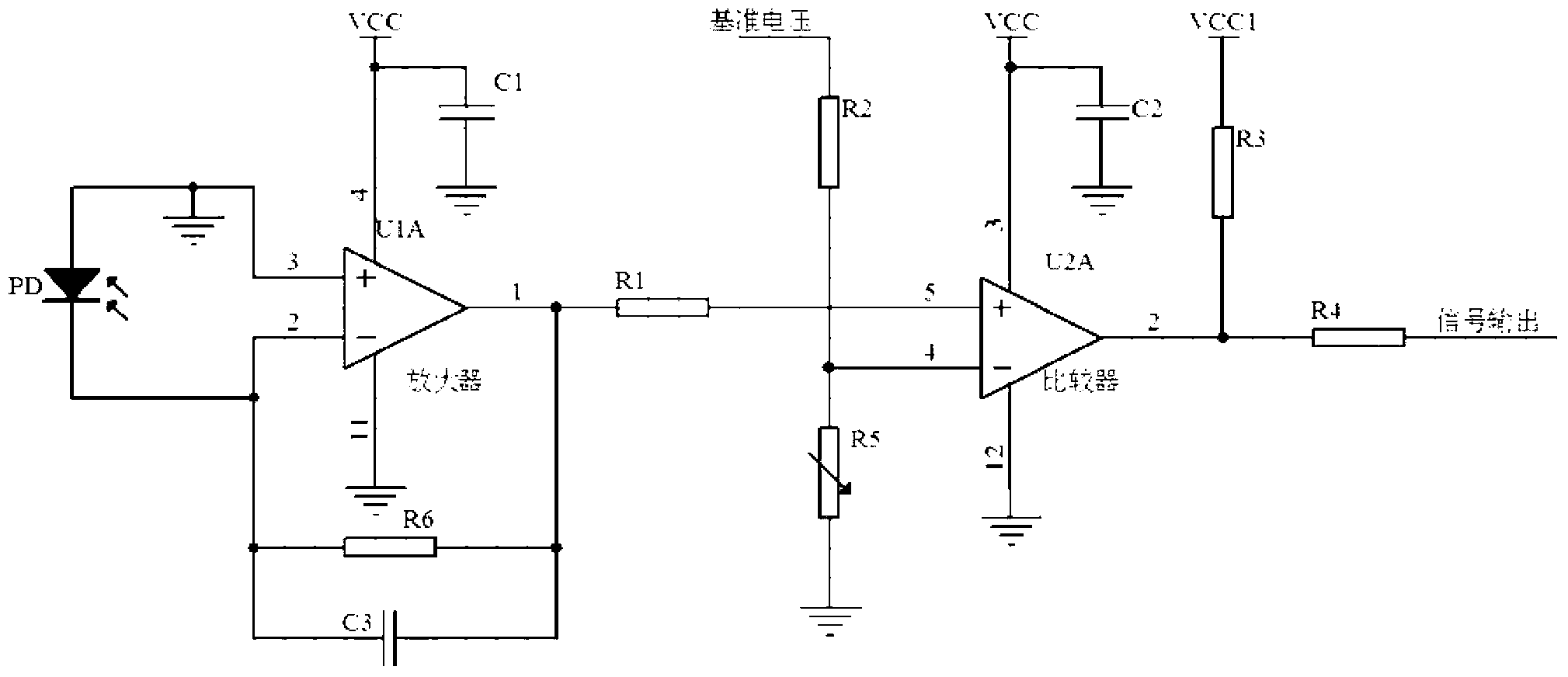Photoelectric detection control circuit
A technology of control circuit and photoelectric detection, which is applied in the direction of measurement circuit and photometry using electric radiation detectors, etc., which can solve the problems of self-excited oscillation of operational amplifiers, inconvenient actual use, and output voltage phase lag.
- Summary
- Abstract
- Description
- Claims
- Application Information
AI Technical Summary
Problems solved by technology
Method used
Image
Examples
Embodiment Construction
[0017] In order to make the object, technical solution and advantages of the present invention clearer, the present invention will be further described in detail below in conjunction with the accompanying drawings and embodiments. It should be understood that the specific embodiments described here are only used to explain the present invention, not to limit the present invention.
[0018] see figure 2 , the present invention provides a photoelectric detection control circuit, which includes a photoelectric converter PD, an operational amplifier U1A and a comparator U2A, wherein:
[0019] The two ends of the photoelectric converter PD are respectively connected to the non-inverting input terminal and the inverting input terminal of the operational amplifier U1A. The photoelectric converter PD can be a photodiode, which is used to convert the received optical signal into an electrical signal, and convert the electrical signal sent to op amp U1A for processing.
[0020] The o...
PUM
 Login to View More
Login to View More Abstract
Description
Claims
Application Information
 Login to View More
Login to View More - R&D
- Intellectual Property
- Life Sciences
- Materials
- Tech Scout
- Unparalleled Data Quality
- Higher Quality Content
- 60% Fewer Hallucinations
Browse by: Latest US Patents, China's latest patents, Technical Efficacy Thesaurus, Application Domain, Technology Topic, Popular Technical Reports.
© 2025 PatSnap. All rights reserved.Legal|Privacy policy|Modern Slavery Act Transparency Statement|Sitemap|About US| Contact US: help@patsnap.com


